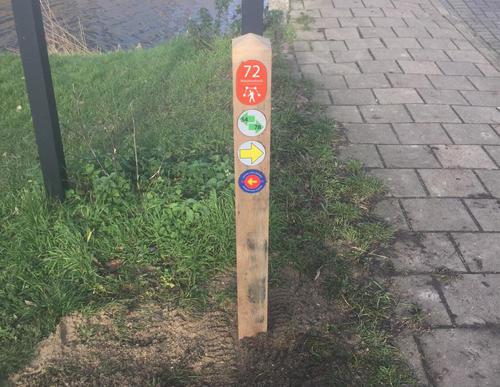Starting Point Haarlemmermeer Station

Haarlemmermeer station is a historic place. Between 1915 and 1950, trains ran to Aalsmeer from this terminus. The line was part of the Haarlemmermeer railway lines, which were discontinued after 35 years because they were never profitable. Fortunately, the beautiful station building designed by the architect De Bazel has been preserved, just like the railway to Amstelveen, which is nowadays being used by the Electric Museum Tramway. Do not forget that in the glory days of the railway, the Olympic Games of 1928 were also held here.
- The Schinkelpad or Schinkel Path (yellow) follows both sides of the banks of the Schinkel river, between the Overtoom and the Nieuwe Meer lake. Today, the Schinkel and the Kostverlorenvaart canal together form the main navigation route through Amsterdam. There are a lot of houseboats moored along the banks and you can see the tram depot of the GVB public transport company. Do not miss the special tree trunk landscape feature in Schinkeleilanden Park. The route briefly passes through the Vondelpark and then runs along the Emmaplein and Lomanstraat with its curved plane trees.
- The Olympiaroute or Olympic Route (purple) is a walk through the Stadionbuurt district. This district owes its name to the national stadium that used to be located on the Stadionkade. It was immediately demolished after the
Games and only the Olympic Stadium designed by the architect Jan Wils remained standing. Between the Noorder and Zuider Amstelkanaal (North and South Amstel Canals), the Amsterdam-Zuid area was redesigned following Berlage's urban development plan. Enjoy the clean lines and the long avenues.

